build terraced beds to reduce soil erosion over delicate, young plants and newly sown seed. Soils that are dry and sandy can be mulched with straw, grass clippings, black plastic, or other materials to retain moisture. A soil that is favorable to healthy root development supports the growth of healthy plants.
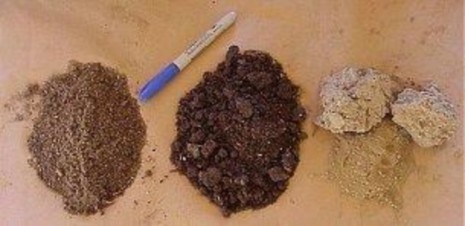
Figure 2.5. Sandy, loamy and clayed soil
(Photo: http://assoc.garden.org/courseweb/perennials/Class4/c4p2.html)
Watering carefully
For best growth, plants usually require about 1 inch of water per week. If it doesn't get enough rain, water the garden. Water plants in the morning so that the foliage dries quickly. This reduces the spread of disease. Avoid using sprinklers if possible because they promote the spread of leaf, flower, and fruit infections. Trickle irrigation is a better choice because it delivers water directly to the soil without getting the rest of the plant wet. It also doesn't splash soil onto the plants, which can move pathogens from the ground onto the plant. (Mulches can also help reduce soil splashing.)
Adequate fertilizer
Plants that are fertilized properly at planting and during the season will grow better and be healthier. Use a complete and balanced fertilizer or incorporate well- rotted manure or rich compost into the soil. Avoid over-fertilizing because it can damage roots.
Có thể bạn quan tâm!
-
 Giáo trình Anh văn chuyên ngành Nghề Khoa học cây trồng - Cao đẳng - Trường Cao đẳng Cộng đồng Đồng Tháp - 1
Giáo trình Anh văn chuyên ngành Nghề Khoa học cây trồng - Cao đẳng - Trường Cao đẳng Cộng đồng Đồng Tháp - 1 -
 Giáo trình Anh văn chuyên ngành Nghề Khoa học cây trồng - Cao đẳng - Trường Cao đẳng Cộng đồng Đồng Tháp - 2
Giáo trình Anh văn chuyên ngành Nghề Khoa học cây trồng - Cao đẳng - Trường Cao đẳng Cộng đồng Đồng Tháp - 2 -
 Giáo trình Anh văn chuyên ngành Nghề Khoa học cây trồng - Cao đẳng - Trường Cao đẳng Cộng đồng Đồng Tháp - 3
Giáo trình Anh văn chuyên ngành Nghề Khoa học cây trồng - Cao đẳng - Trường Cao đẳng Cộng đồng Đồng Tháp - 3 -
 Giáo trình Anh văn chuyên ngành Nghề Khoa học cây trồng - Cao đẳng - Trường Cao đẳng Cộng đồng Đồng Tháp - 5
Giáo trình Anh văn chuyên ngành Nghề Khoa học cây trồng - Cao đẳng - Trường Cao đẳng Cộng đồng Đồng Tháp - 5 -
 Giáo trình Anh văn chuyên ngành Nghề Khoa học cây trồng - Cao đẳng - Trường Cao đẳng Cộng đồng Đồng Tháp - 6
Giáo trình Anh văn chuyên ngành Nghề Khoa học cây trồng - Cao đẳng - Trường Cao đẳng Cộng đồng Đồng Tháp - 6 -
 Transplanting Method Helping Increase Paddy Yields
Transplanting Method Helping Increase Paddy Yields
Xem toàn bộ 91 trang tài liệu này.
Proper space
High humidity and moisture favor the development of plant diseases. Allowing enough room for plants to grow and for air to circulate around mature plants reduces humidity and encourages rapid drying of plants after rain.
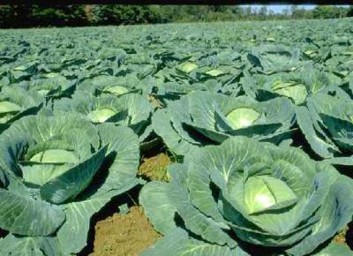
Figure 2.6. Proper space for air to circulate around and reduce humidity
(Photo: Internet source)
No debris
Always remove and destroy or discard (in the trash) plant material that shows signs of disease. Work in the garden when plants are dry because moisture on plants aids the spread of diseases.
At the end of the growing season, clean up all crop residues. Disease agents overwinter in debris and may infect new plants the following season.
Active composts should suppress pathogens that are often found on leaf material. Composting these plant parts is highly recommended. Diseased tubers, bulbs, and similar plant parts, on the other hand, should be discarded and not composted. These plant parts can survive longer periods in the compost pile before breaking down and may actually begin to grow within the compost pile.
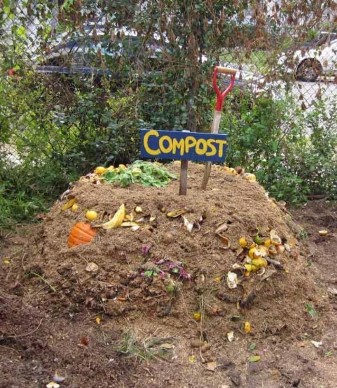
Figure 2.7. Compost
(Photo:http://www.dolphinblue.com/blog/how-to-start-your-own-compost-pile/)
Rotating crops
Successive plantings of one crop family in the same area promotes the buildup of disease agents in the soil, making disease problems more severe over time. Rotate plants to different areas of the garden to help reduce losses caused by soil-borne disease agents. Avoid successive plantings within crop families, such as the cabbage family (cabbage, broccoli, cauliflower, etc.), the squash family (winter and summer squash, melons, cucumbers, etc.), and tomato family (tomatoes, potatoes, eggplant, and peppers).
Exercises
Task 1: Read part 2.2 and decide whether the statements are True (T) or False (F).
1.Choosing resistant varieties is the easiest way to reduce diseases in the garden. (2.2.1)
2.A dusting of fungicides will protect the emerging seedling from a harmful "damping off" pathogen. (2.2.2)
3.Seeds are treated with hot water to remove infectious agents and to reduce the risk of seed-borne viruses. (2.2.3)
4.Vegetable crops thrive in full sun. (2.2.4)
5. Sandy soils can be mulched with straw, grass clippings, peat moss, sawdust or other materials to retain moisture. (2.2.5)
6.Trickle irrigation is a better choice because it doesn't splash soil onto the plants, which can move pathogens from the ground onto the plant. (2.2.6)
7.Over-fertilizering will help plants grow better and be healthier. (2.2.7)
8.Plants need enough space to grow and for air to encourage rapid drying of plants. (2.2.8)
9. Disease agents that oversummer in debris may infect new plants the following season. (2.2.9)
10. Avoiding overlapping plantings within crop families is warning to protect plants from soil-borne disease agents. (2.2.10)
Task 2: Read part 2.2 and answer the following questions.
1/ How do resistant varieties resist disease inflection? (2.2.1)
……………………………………………………………………. 2/ What is function of fungicide? (2.2.2)
…………………………………………………………………….
3/ Why is it essential to examine the plants when shopping for transplants or other propagating material? (2.2.3)
……………………………………………………………………. 4/ What sort of sites produce weak, spindly plants? (2.2.4)
……………………………………………………………………. 5/ What part of plant makes the plant healthy? (2.2.5)
……………………………………………………………………. 6/ Why should water be watered in the morning? (2.2.6)
…………………………………………………………………….
7/ Instead of chemical fertilizer, what can be used to rich the soil? (2.2.7)
……………………………………………………………………. 8/ How to reduce humidity? (2.2.8)
……………………………………………………………………. 9/ When are crop residues cleaned up? (2.2.9)
…………………………………………………………………….
10/ Why is it necessary to avoid successive plantings within crop families? (2.2.10)
…………………………………………………………………….
UNIT 3
CHEMICALS FOR FRUIT TREES MH35-03
Introduction
Fruit trees can benefit from several kinds of chemicals applied to the foliage, branches and surrounding soil. Various chemical formulations are commonly used to prevent and treat fungal and bacterial infections, dissuade or kill pests, fertilize the soil and to improve the tree's growth and fruiting performance.
Objectives:
By the end of the lesson, learners are able to:
+ Scan for details rapidly, collect information and make inference in order to give exact decisions to final results.
+ Get main content of the lesson through using meanings of new words in translating into Vietnamese.
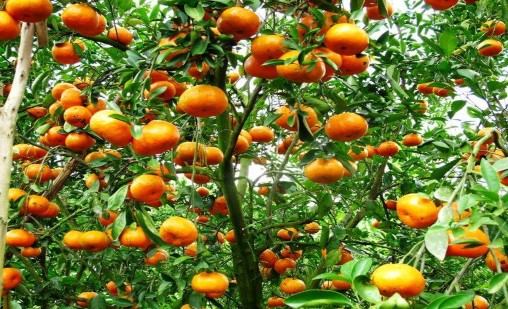
1. Overview
Fruit trees can benefit from several kinds of chemicals applied to the foliage, branches and surrounding soil. Various chemical formulations are commonly used to prevent and treat fungal and bacterial infections, dissuade or kill pests, fertilize the soil and to improve the tree's growth and fruiting performance. While many fruit tree species have unique issues that dictate what specific chemicals may be helpful, most fruit trees experience similar enough
problems to warrant some type of chemical intervention at some point in their life cycle.
2. Chemicals for fruit trees
2.1. Fertilizers
Fertilizers and soil amendments are common chemical treatments for fruit trees. Keeping the tree growing vigorously, flowering and developing fruit in profusion are part and parcel of growing fruit trees. When fruit trees fail to grow or fruit easily, feeding a balanced complete fertilizer with a 10-10-10 guaranteed analysis in the early spring before flowering is warranted. Chemical fertilizers contain synthetic elements of nitrogen, phosphorous and potassium and are dosed by giving 1/10 pound of fertilizer for every year of the tree's age.
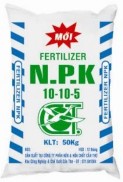
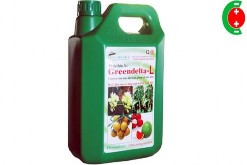
Figure 3.1. Solid fertilizer and Liquid fertilizer
(Photo: www.baobihaiduong.vn, www.greendelta.com.vn)
2.2. Bactericides
Bacterial infections are common on fruit trees and can become active by a wide range of conditions that let the bacteria take hold and multiply in compromised trees. Common bacterial infections in fruit trees include fire blight, bacterial canker and bacterial spot. Bacteriacides for fruit trees often use copper, lime sulfur or sulfur as the active ingredient to kill and contain the bacteria cells. Bacteria treatments are often mixed with fungicides to prevent or treat both issues in a single application. The are most commonly applied in anticipation of a problem and to prevent overdevelopment of bacteria.
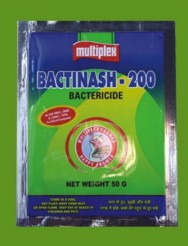
Figure 3.2. Bactericide
(Photo: www.multiplexgroup.com)
2.3. Fungicides
Fungicides are used to control fungi plants that colonize on a fruit tree. Some common examples are molds, botryosphaeria, apple scab, bitter rot, brown rot, and black knot. Fungal infections are are commonly treated by spraying the trunk, branches and foliage with chemical formulations that contain one or more of the following active ingredients: Captan, Chlorothalonil, lime-sulfur, Mancozeb, Benomyl, Dodine, Dikar, Glyodex or Polyram.
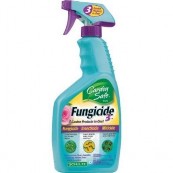
2.4. Pesticides
Figure 3.3. Fungicide
(Photo: www.acehardware.com/product)
Pesticides are used to control insect damage to both the fruit tree structure and the fruit itself. Beetles, moths, curculio, mites and aphids are among the many pests






